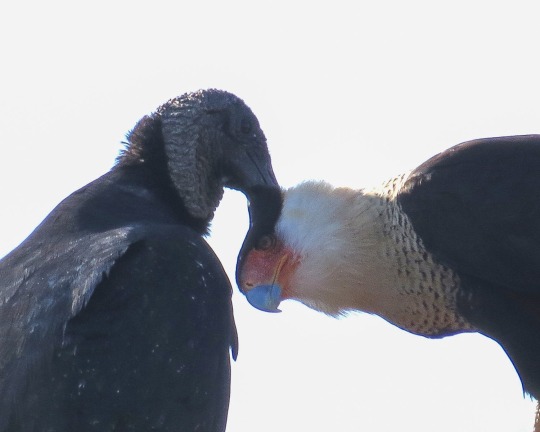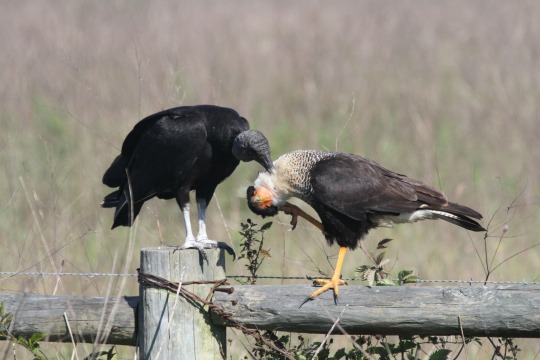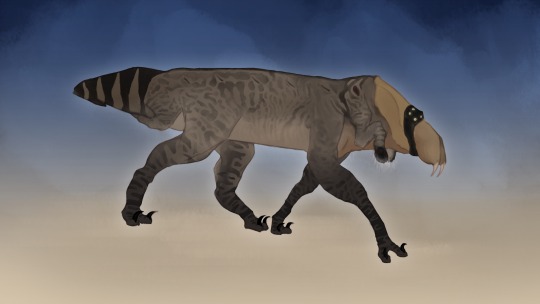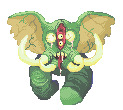#interspecifics
Explore tagged Tumblr posts
Text




Northwestern Wolf & Mountain Coyote | Nakul Nagaraj
#photo#canidae#canis#canis latrans#canis lupus#canis latrans lestes#canis lupus occidentalis#coyote#gray wolf#mountain coyote#northwestern wolf#interspecific#nakul nagaraj
2K notes
·
View notes
Text
what if… karasu were a false killer whale… and i were a bottlenose dolphin… and we were in love………
#coucou coco!#tabico cetacean au… LAJFSDLL#sorry. was thinking about whale watching with karasu and then just. This. 🐬 AOSKDJKD BUT THERE ARE KNOWN INTERSPECIFIC INTERACTIONS BETWEEN#THEM… i read a thesis some years ago i think about fkw in hawaii (???) and how they associate non-aggressively with bottlenose dolphins for#the most part :3 they can mate outside of captivity… and produce viable offspring… so… you knowwww…#xd xd xd#kajsdowb SORRY 🙈
25 notes
·
View notes
Text

IT IS FINALLY DONE... (Thx to my dearest friend @vzosh for little edit)
#art#artists on tumblr#digital art#oc#drawing#mass effect#mass effect fanart#my art#oc art#original character#turian me#turian#mass effect art#digital drawing#digital painting#homosexual#gays#interspecific
24 notes
·
View notes
Text


Indian Spotted Deer & Nilgai | Aniruddha Ghosh
#photo#bovidae#cervidae#bovinae#cervinae#axis#boselaphus#axis axis#boselaphus tragocamelus#axis axis axis#chital#nilgai#indian spotted deer#interspecific#aniruddha ghosh
8 notes
·
View notes
Text

44 notes
·
View notes
Text

African Leopard & Eastern Serval | triorache56
#photo#felidae#felinae#pantherinae#leptailurus#panthera#leptailurus serval#panthera pardus#leptailurus serval lipostictus#panthera pardus pardus#leopard#serval#african leopard#eastern serval#hunt#interspecific#triorache56
4 notes
·
View notes
Text
This is so cute. 🥹 Interspecific allopreening is a fascinating concept. I've never heard about it until now. The more you know.
every single day I think about how american black vultures are known for engaging in interspecific allopreening (preening between different species)
and they have a specific relationship with crested caracaras, in which the black vultures assist them by not only preening them after meals but also leading them to food in the first place— due to their superior sense of smell— while the caracaras assist the black vultures by acting as a warning signal in case of danger
and while this is more typical of black vultures, this is not common at all for any member of the falconidae family— it’s a special bond!


yet another post in favor of vultures everyone , hope you enjoy:) and I implore you to do some more research on these incredible birds !!
EDIT: I meant interspecific allopreening! excuse my typo!
#birds#birdposting#bird blogging#birdblr#black vulture#crested caracara#animal facts#bird facts#vultures#interspecific allopreening#images
51K notes
·
View notes
Text
Pelargonium pac® TWOinONE

It's slowly entering the "hot" phase!
The cutting season for our interspecific all-weather beauties is slowly approaching its peak.
Cuttings from our mother plants in Kenya are arriving in increasing quantities every week and are being turned into young plants in a wide range of varieties according to customer requirements.
https://pac-elsner.com Tel +49 35248 3991-0
#interspecific#TwoInOne#RubyRed#halfzonale#halfpeltatum#horticulture#BeddingPlants#youngplants#herbs#hops#GroundCover#poinsettia#pelargonium#energyefficiency#Paulownia#PacElsner#elsnerpac#thiendorf#spring2024
0 notes
Text

New Pygmy Gecko (Goggia: Gekkonidae) from the arid Northern Cape Province of South Africa
WERNER CONRADIE, COURTNEY HUNDERMARK, LUKE KEMP, CHAD KEATES
Abstract
The genus Goggia is composed of ten small bodied leaf-toed gecko species endemic to South Africa and adjacent Namibia. Using a combination of phylogenetic and morphological analyses we assessed the taxonomic status of an isolated rupicolous population discovered south of Klein Pella in the Northern Cape Province of South Africa. The newly collected material was recovered as a well supported clade by two independent phylogenetic algorithms (maximum likelihood and Bayesian inference), with little intraspecies structuring. While the particular interspecific relationships among closely related Goggia remain unresolved, the phylogenetic results suggest the novel material is related to G. rupicola, G. gemmula, G. incognita and G. matzikamaensis. This is supported by the similar ecologies (rupicolous lifestyle), geographies (arid western extent of South Africa) and morphologies (prominent dorsal chevrons and yellow-centred pale dorsal spots), which are shared among these closely related species. Despite their similarity, the novel population from Klein Pella remains geographically separate, differs from congeners by an uncorrected ND2 p-distance of 11.03–22.91%, and is morphologically diagnosable. Based on these findings we describe the Klein Pella population as a new species.
Read the paper here: New Pygmy Gecko ( Goggia : Gekkonidae) from the arid Northern Cape Province of South Africa | Zootaxa
215 notes
·
View notes
Text

Integrative taxonomy reveals two new giant pill-millipedes of the genus Zephronia Gray, 1832 from eastern Thailand (Diplopoda, Sphaerotheriida, Zephroniidae)
Ruttapon Srisonchai, Natdanai Likhitrakarn, Chirasak Sutcharit, Thomas Wesener
Abstract
A large amount of material of the millipede genus Zephronia Gray, 1832 was collected during 2014–2023 from many parts of eastern Thailand. An integrative study of morphological characters and genetic data (COI gene) revealed two new species: Z. chantaburiensis Srisonchai & Wesener, sp. nov. and Z. macula Srisonchai & Wesener, sp. nov. The two new species clearly differ from other congeners by their unique characteristics, especially in their colour pattern and telopod shape. The interspecific genetic distances of the 658 bp COI gene barcoding fragment between these new species and all other species of giant pill-millipede from Thailand, Laos and Cambodia are 12.01–23.49% for Z. chantaburiensis sp. nov. and 17.93–25.13% for Z. macula sp. nov. While relationships among species remain preliminary, the phylogenetic tree shows that species of Zephronia are interspersed with species of Sphaerobelum Verhoeff, 1924 and Prionobelum Verhoeff, 1924. Phylogenetic analyses place both new species in a clade termed Zephronia s.s., which receives support also from morphological data, showing a unique position of the organ of Tömösváry. Z. macula sp. nov. appears to occur over a broad distribution whereas Z. chantaburiensis sp. nov. was found only at the type locality. Given that all known records are in the eastern part of Thailand, we thus regard both species as endemic. Morphological illustrations based on SEM micrographs and a distribution map are also provided.
Read the paper here:
Integrative taxonomy reveals two new giant pill-millipedes of the genus Zephronia Gray, 1832 from eastern Thailand (Diplopoda, Sphaerotheriida, Zephroniidae) (pensoft.net)
214 notes
·
View notes
Text




Southern Bat-eared Fox & Southern Black-backed Jackal | tessabrunette
#photo#canidae#lupulella#otocyon#lupulella mesomelas#otocyon megalotis#lupulella mesomelas mesomelas#otocyon megalotis megalotis#bat eared fox#black backed jackal#southern bat eared fox#southern black backed jackal#interspecific#the pack#tessabrunette
416 notes
·
View notes
Text

Meet Lycognathus(otherwise known as the spiderdog)! This small carnivore wanders the plains that grow between forest colonies, preying on a wide variety of both small and large ‘animals’(aka mobile heterotrophic organisms). This creature may be small, but it packs a powerful venom in its two intimidating fangs, which it uses mainly to dispatch prey, though it won’t hesitate to bite in defense if it feels threatened. This species is mainly solitary, but will occasionally hunt in pairs or engage in mobbing behavior when scavenging. Lycognathidae is a large and diverse class, but most lycognathids are small and nocturnal.
This took way too long to do, I really need to work out a style that both looks nice and doesn’t consume an extreme amount of my time. Hopefully once I figure that out I’ll be on track to making more finished pieces faster!
Detailed lore below here:
The genus Lycognathus was one of the first mobile organisms on the fluffbugs’ planet to be named scientifically by humans. Several small species were named before, but they quickly became invalid when the Interspecific Cultural Exchange Act was passed. Within this act were the negotiations conducted with delegates from the fluffbug planet, who agreed that no official human designations for any living organisms (and also some non-living artifacts) could be assigned unless the people who live in the same region of an organism approve its designation.
The fluffbugs did have a reason for this. They made the case that humanity couldn’t know if their taxonomic conventions would apply at all to a completely different planet, and that many organisms already have names, just ones unpronounceable to humans, along with cultural and religious significance, and so therefore ignoring these facts is tantamount to a violation of a people’s right to cultural heritage.
Despite a few reservations, human scientists agreed, though still stressing the importance of classification in scientific research. Therefore, when necessary, a human science organization could propose a designation for approval of the fluffbug cultures and their delegates.
Most organisms are referred to with rough translations of their native names, which ends up in names such as earthrazer(aka “the one who uproots the ground”). This system is flawed, but it has mostly succeeded in keeping relations between the two sophont species peaceful.
Lycognathus was, as mentioned before, one of the first species to be approved. This isn’t to say the fluffbugs of the world(since lycognathids exist across all nearly all dry terrestrial regions of the planet) weren’t hesitant, but most didn’t have too much personal history with the clade. Several attempts were made to domesticate Lycognathus species specifically, and despite them having many tendencies that would make them prime candidates for hunting aids, all attempts failed, mainly due to the danger these species posed to anyone who wasn’t careful. It’s hard to want to keep around your new pet dog-spider after it kills your child in one bite.
Hopefully I can get into successful domestication cases soon, and talk about one of my favorite aspects of fluffbug culture. But for now, my wrists are hurting like crazy haha.
#speculative evolution#speculative biology#xenobiology#astrobiology#aliens#alien species#alien planet#art#my art#the astrobiosphere#tw arachnophobia#just in case lol
107 notes
·
View notes
Text
Look, man, an interspecific cross of peach, apricot, and plum sounds like a thing I would love to put in my mouth for sure, and I mean,

Gorgeous! But I feel like if I were in the meeting, I would have suggested we workshop the trade name a little more before trademarking the word "peacotum". (source)
#also of course the fact that it's one company's tree#means it'd be hard to get scionwood for my stonefruit frankentree
218 notes
·
View notes
Note
Im writing a bunch of fantasy races living together, can u give me prompts for that?
ooooooooh this one is fun. I'm doing something similar! But I'm sure most fantasy writers have this too!
Worldbuilding Prompts: (don't forget, "factions instead of species" , I use species here as a general term, but don't forget to give each species its own wide and varied culture within the species, which can overlap in interpsecific communities!)
Do any of your fantasy species fill specific ecological niches and thus have specific dietary requirements?
.
What are the "staple foods" of each species, and branching out, what kind of dishes do they make?
.
What spices are prized by each species, and which are so commonly available they're considered "plain" or "boring"?
.
Do any of the other species struggle to eat another species' cuisine because of the level of seasoning, such as one species loving capsaicin or really spicy ginger, and another species prefers to "taste the food as it naturally is"?
.
On the topic of foods, are there any foods from one species' cuisine that is toxic or outright *deadly* to other species, due to specific physiological makeup?
.
In terms of living environment, is there anything that would, in a vacuum, cause two species to be incompatible with co-habitating? In a functioning interspecific society, what technologies and habits have the people of your world developed to live peacefully side-by-side?
.
Are your various species all reproductively compatible? -- aka, can they successfully have children together?
.
(If you're into fantasy sexy-times, this is a good time to explore how interspecific couples, (as well as disabled couples) are intimate with each other!)
.
Are the children of such unions capable of having children themselves?
.
Do the children of interspecific couples usually take after their mother's form and species with a few traits from the father, or are they an even mix of both species?
.
Do these interspecific children exhibit any unique or common traits or health issues, such as gigantism, bone or connective tissue issues, etc?
.
What kinds of technology and medicines would develope to help any interspecific children who have any health issues?
.
For that matter, what kind of assistive technologies do your species develop to help with accessibility devices for disability?
.
If any of your species have vastly different body types or sizes, do they have any specific clothing or jewelry fashions that inspire fashion in other species?.
uhhh its almost midnight now so that's all I got so far for that one! enjoy!
#novella november#replies#writing advice#writing prompts#worldbuilding prompts#world-building prompts#interspecies cohabitation#fantasy#scifi
14 notes
·
View notes
Text
Monster Hunter muses

Another day, another prompt for potential in Monster Hunter behaviour. I do hope we get to see more expanion on creature interaction now that the maps can comfortably accommodate a larger number of them, as well as multiples of the same species. There was also a muse for interspecific behaviours that entail more mutualistic or amiable interactions. After all, even in a world as belligerent as Monster Hunter, some critters could do well to be passive.

Other muses I could figure is that Yian Kut-Ku and Congalala are content to forage together, as both can unearth the fungi or insects the other desires while having more eyes open to watch for enemies like Doshaguma and Rathalos. Do you have any ideas for monster behaviours?
#text#monster hunter#monster hunter wilds#mhwilds#monhun#blangonga#congalala#gore magala#chatacabra#nerscylla#gypceros#lala barina#doshaguma#xu wu
16 notes
·
View notes
Text

Elephant
Exhibit: Point Red, Point Yellow, Point Green
Standing at roughly 3 to 5 feet tall at the shoulder, elephants are medium sized mammaloids that are known for their ability to rapidly reproduce and colonize habitats. Curiously, elephants only have one sex and reproduction seems to begin during bouts of interspecific conflicts in which the elephants "joust" and puncture the hides of other elephants. After these conflicts, gestation begins and lasts 8 to 12 weeks before a litter of 4 to 6 pups are born.
Their aggression is so intense that larger predators tend to vacate areas where elephants begin to proliferate. This, and their tendency to strip away all other life have earned infested areas the name of Elephant Graveyards.
Extreme caution is advised.
84 notes
·
View notes